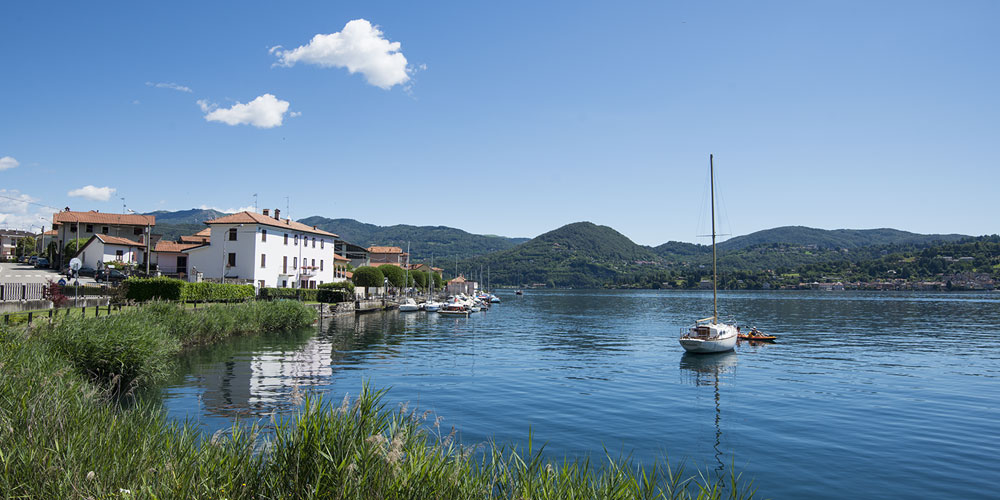
Address
45.801876311432, 8.3857649281629
GPS
45.801857478217, 8.3856890847658
The small town of Pella stands on a small peninsula that extends over the waters of the lake, formed following the sedimentary deposits brought by the Pellino stream over time.
A cup-shaped boulder was found in the area, dating back to the centuries between the 4th and 1st centuries BC.
Pella, like most of the villages around Lake Orta, was part of the territories of the Riviera di San Giulio, a principality that maintained its autonomy between the 13th and 18th centuries.
Near the small historic center, characterized by narrow and winding streets, you can admire the suggestive humpback bridge. It is dated 1578 and was used in the past to connect the parish church to the nearby cemetery of San Rocco, a transit route for funeral processions that carried the coffins for the final farewell.
Church of San Filiberto
The complex of San Filiberto, located not far from the historic center of the town, is worth a visit. The Romanesque church faces east towards the landing on the lake shore, from which even today boat processions depart to the Island of San Giulio. A majestic structure characterizes it, while a series of nineteenth-century chapels, depicting the Via Crucis, surrounds it.
It is the only church in Italy dedicated to San Filiberto and its bell tower is the oldest on the western coast of Lake Orta, dating back to the years between 1075 and 1110. You certainly cannot miss a visit to this church, which is one of the most spectacular on Lake Orta.
Ronco and Alzo
A little further north of Pella, following the asphalt road that runs along the lakeside, you can reach the charming hamlet of Ronco. A true hidden gem, this town includes a group of recently renovated houses.
The hamlet of Alzo, located in an elevated position, is also part of the Municipality of Pella. It is known for the intense mining activity that has been carried out here for centuries. A precious white granite was extracted from the quarries of Alzo, highly appreciated and exported to Italy and Europe. The protagonists of this activity were the stonecutters. They worked in conditions of extreme danger and difficulty, with grueling hours and shifts.
Nowadays the main production activity of the area is taps. In the nearby municipality of San Maurizio d’Opaglio, numerous industries specialized in the production of taps and valves were born during the 20th century. The production history of these lands is told in the Museum of Taps and its Technology based in San Maurizio.
